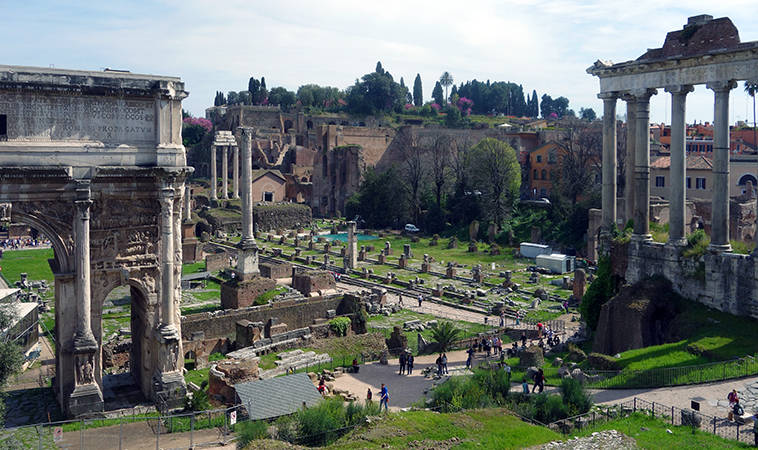4 Roman Sites to Form an Archaeological Park
Exciting opportunities are ahead for the remains of Ancient Rome. In order to ensure the highest level of preseravtion quality and revenue, the Colosseum, Domus Aurea, Palatine Hill, and Roman Forum will form one archaeological park under the same management, as opposed to being governed by different branches. Dario Franceschini, current Minister of Heritage and Cultural Activity and Tourism, is enthusiastically pioneering this project. He explains that autonomous management ensures the highest level of protection and maintenance of these principal landmarks.
Reforms for better management of the Colosseum have been underway since 2014. This is normal protocol for maintaining cultural ruins and museums. As Franceschini shared, reforms for the Uffizi went though similar management changes, which resulted in immediate revenue increases; therefore, the future of the grand park in Rome looks optimistic.
The new management will insure that the revenue of ticket sales and government funding go directly to the maintenance of the parks. The Special Superintendency, an independent branch that specializes in accountancy and management, is absorbing the duties of the Ordinary Superintendency. The former's position will be morphed to physically oversee the Colosseum, Roman Forum, and Palatine Hill. Predicted revenue post-transition will be about $150 million euro annually after state funding and ticket sales.
Another important step includes the selection of a fit director who will be responsible for everything this park entails. This continues the autonomous aspect that has worked well for national parks and museums in the past. The selection process is open internationally and will begin in the near future.
Already this transition has caused new improvements, such as increased visitation, better services, and more money in the budget to update the archaeological park. Overall, it is far more practical to have one branch covering all the main historic tourist locations and to treat them as one large park. Geographically the parks are close enough to be considered one. Fiscally Rome will control the revenue of the parks as a whole, and put money towards important structural and aesthetical repairs.





































Comments
Thanks For Information